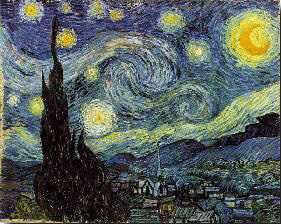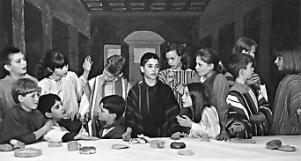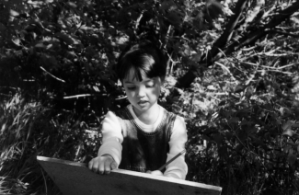
Question & Answer
Question? - My daughter is being home-schooled and is enrolled in private art lessons. Do such lessons provide for her needs in art?
Answer! - Of course there is no way of knowing exactly what your daughter is being taught in her private lessons, but such lessons usually attract either those who are talented or those with a high interest-level. The teacher, who is probably a local artist, will provide instruction in methods and media, such as watercolor or pastel, and help the students to develop their talents.
Most of the time is spent working on a piece of art. Although it's wonderful for a child to have such an opportunity, it's important to recognize that there is a difference between such lessons and an art education program. Possibly the simplest way of understanding this difference is to compare study in a comprehensive music program with piano lessons, or to compare participation in a well-rounded physical education program to playing on the local soccer team or taking swimming lessons.
The scope of an art education program is much broader and less specialized. It will introduce a wide variety of media, and provide for skill development, but it will also acquaint the children with a general perspective of art and artists in history, it will attempt to develop an aesthetic awareness, help the students to understand the qualities of a good composition, and provide opportunities for problem-solving. The children will become acquainted with art terms and vocabulary, and may even gain information on careers in art. In short, the goal of a good art education program is not so much to develop talent as it is to teach children to think, to create, and to appreciate the world in which they live.
How wonderful if your daughter could have the benefit of both private art lessons and art education.

Analyzing a Composition
What are the things we look for when we analyze an artistic composition? The name of the artist, the style, and the time period are all important, but in SERIES II the principles of design are also examined, and many are applied in student work. The painting above is a good example of several principles of design, and it is one that is analyzed in Where Eagles Soar. The children will examine the painting as follows:

Vincent van Gogh, "The Starry Night," 1889,
Museum of Modern Art, New York
Notice the swirling, choppy brushstrokes. Describe what sort of texture these brushstrokes give the painting? (rough, choppy, jagged, wavy, etc.) Is the whole painting done in the same manner? (yes) Using the same style and quality of stroke creates a oneness or sameness referred to as unity. This oneness helps to hold the painting together as a complete unit. If any part of the painting were done with a smooth brushstroke or in a realistic style, that part would look out of place and would not blend in. Explain how color is also used to achieve unity. (mainly bluish tones with some green, interrupted with repeating yellow - the same color tones are used throughout)
Notice how the swirls of blue, white and yellow create movement as the eye is drawn across the sky from left to right; yet, the cypress tree on the left and the bright moon on the right prevent the eye from "falling out" of the composition on either side. If we were to cover up the moon on the right, how would this affect the composition? Does the foreboding cypress tend to weigh heavily on the left side? If we covered up the cypress, does the moon attract too much attention to the right upper corner? By putting two strong elements opposite each other, van Gogh has achieved a balance between the cypress and the moon, the two large objects in the painting.
We have already talked about movement being formed in The Starry Night by the swirls of color in the sky. But movement is created in the painting in another way as well. The eye tends to be attracted by the repetition of shapes or colors, darting from one shape to another similar shape. This repetition is present in The Starry Night. Identify the repeating shapes and colors in the sky. (yellow circles)

Students Recreate "The Last Supper"
Students at Christian Centre Academy in Saskatoon are seen posing in their own reproduction of The Last Supper, taken from a unit in Where Eagles Soar. In the unit, the students study the original painting done by Leonardo da Vinci - its location, the medium used, the problems that have led to its gradual deterioration, the compositional elements, as well as the seating arrangement of the disciples in the painting.
To recreate the painting, the students paint the background as though the table and the figures are not a part of the composition and then add a real table and bread, as well as cups and dishes - some modelled in class from clay. Then, with each one playing the part of one of the disciples or of Jesus, the students stand in front of the background, adopting a pose taken from Leonardo's painting.

Student reproduction of The Last Supper
The photographs were reproduced and each students was given one to take home. You might want to enlarge a copy to frame for your show case at school.

Make Problem Solving Your Goal
In math or spelling, as in most traditional school subjects, the student relies on convergent thinking, which focuses on only one correct asnwer to a problem.
When memorizing the spelling of a word, creativity is hardly desirable. In the arts, however, such divergent thinking is a valuable skill.
Many tasks in life require divergent thinking. Planning a vacation or designing a supper menu are only a couple. Divergent thinking, which focuses on the generating of multiple solutions, is part of the larger skill of problem solving.
Problem solving requires a number of important cognitive skills and includes not only producing ideas but also choosing a solution from among them. Probem solving ability can be developed throught stimulating art assignments. Such assignments require the children to produce numbers of novel ideas and then to make a series of choices in order to complete the project. If we substitute cute craft ideas for real art lessons, we must examine our goals. Are we trying to provide a break from the rigors of academics? Are we responding to the pressure of providing something the children can take home with them? While this kind of art can destroy creativity, a well-planned and carefully structured program can offer, perhaps, the most accessible avenue to creative development in the elementary school program.
Question & Answer
Question? - Why is creativity so important? The children seem to enjoy doing crafts even if they all look alike when they are finished?
Answer! - Although children may enjoy going through the motions of a cut and paste project just as they may have enoy the motor activity involved in coloring, we must be diligent in examining the educational value of such experiences. Always judge an art assignment according to the goals of art education: Does it develop problem solving skills, foster expression and creativity, improve visual discrimination skills, enhance the ability to visualize, provide fulfillment throught productivity?
So-called dictated art tells children their own ideas are not good enough and that they need to depend on an adult for any planning or real thinking. It allows for no expression, only copying. There is little fulfillment since the idea was someone else's. And above all, no real thinking skills are required.
In designing assignments, we should try to provide children with an opportunity to affect their world, to create something from nothing, to experiment, and to problem solve. None of these objectives are accomplished through dictated art.
Gathering Sounds
The six-year-old student below is participating in an outdoor lesson, entitled, Gathering Sounds, from the Grade One program, Make Me a Rainbow. While they are outdoors, the children gather sounds to take back inside.
They do so by listening carefully to the gentle breeze in the trees, the birds chirping, a car passing by and then recording each of the sounds as uniquie abstract scribble design of their own creation. The designs they create represent the sounds they in the same way that written symbols represent words, except that the child is expected to relate the character of the sound with the character of the scribble design. Besides practicing auditory skills, the children also develop problem sovling skills, using divergent thinking to develop symbols, and choosing a solution from among limitless possibilities.

Gathering Sounds - Grade One

Brain-Based Art Education
"My son will never forget Michelangelo!"
Such a comment is typical of students' experience in a fifth grade art class involving a simulation of painting the Sistine Chapel ceiling. Overturned tables in the art room represent the ceiling as the children lie on the floor and work on drawings taped to the undersides of the tables. Imagining themselves to be the great artist lying on the scaffolding in the vast chapel, they quickly experience the awkwardness of their position and the pain of extending an arm above their head for even a very short period of time.
Simulations like this one are seen in "brain-compatible" classrooms where activity-base learning is commonplace. But what is it about the hands-on approach that captures it in the memory? Current findings in brain research provide enlightenment for teachers by confirming what the best in the profession have known all along. For learning to be effective, it must be meaningful to the students. Although our delivery may be polished and our knowledge base extensive, our effectiveness as teachers will be shallow if we fail to connect with the children.
According to brain researcher, Eric Jensen (2000), attaching new information to an existing knowledge base, stimulating the senses, and engaging the emotions all contribute to making an experience meaningful. When learning is meaningful, then existing neurons in the brain make connections with other neurons; if no meaning is found, then no connections are made, and the information is discarded.
Content alone does little to stimulate either the senses or the emotions, and being less meaningful, it is much more easily forgotten. Real life experiences, role-playing, hands-on activities and information that responds to curiosity produce the greatest learning and the longest retention. Indeed, the proverbial teachable moment, which represents a window of aroused emotion, is well known to educators and parents. Being poised to respond to such a moment while embedding information in context is well-known in Scripture: "And thou shalt teach them diligently unto thy children, and shalt talk of them when thou sittest in thine house, and when thou walkest by the way, when thou liest down, and when thou risest up." (Deuteronomy 6:7)
When art students reproduce a living version of Leonardo da Vinci's "The Last Supper," they become immersed in the total experience. Dressing in character and posing as Jesus and His disciples in front of their own creation of the painting's background, they invest themselves emotionally in a way that embeds the activating into their memories. How much more relevant is such a context than the presentation of a worksheet or the delivery of a lecture?
Emotions evoked by a public parade of box sculpture creations, memories revisited by smelling scented objects, views expressed in picture-making - all these are meaningful activities that challenge the brain both to grow and to remember. Creating a novel student desk design or drawing plans for a tree house require an emotional investment and provide a workout for the brain similar to an aerobic workout for the body. According to Jensen (2000) such activities are especially useful because they are "challenging, novel, and complex tasks that require intensive thinking and multi-tasking" (p. 191).
While, as Christians, we are expected to "study to shew thyself approved..." (2 Timothy 2:15) it is helpful to know how the best learning can be accomplished. Predictably, it is the Bible's approach to learning, that of embedding knowledge within context, that is proving itself the most beneficial. As Eric Jensen (2000) says, "Sorting, analyzing, and drawing conclusions in the context of one's own life is the only learning that sticks" (p. 279).
References from Jensen, E. (2000). Brain-Based Learning (2nd ed.). San Diego, CA: The Brain Store Publishing.

illustrations of the Application of Bloom’s Taxonomy in the Choose Art Curriculum
bloomstaxonomy.pdf
 top of page top of page

|